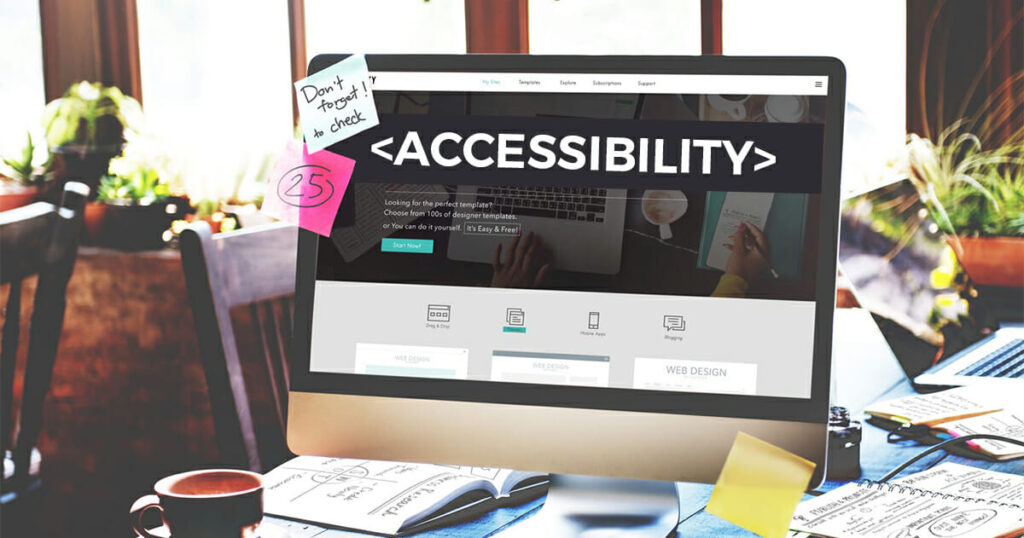Earlier this month, a federal court, for the first time ever, ruled against a private company because its website was not accessible to users with visual impairments. As a result, the company in question will likely spend tens of thousands of dollars bringing its site into legal compliance.
Accessibility on the internet is nothing new. In fact, the Web Content Accessibility Guidelines (WCAG) version 2.0 – a set of technical guidelines for web developers that has become the gold standard for accessible development procedures – were released in 2008. Still, adherence to WCAG is shamefully low across the web. A 2012 study published in the Journal of Usability Studies found that only 28 percent of blind users were able to complete online job applications. And despite popular beliefs, users that rely on screen-reader technology are no small group. According to Interactive Accessibility:
- More than 8 million people nationwide suffer from vision-impairment.
- Another 7.6 million have hearing disabilities and may rely on written transcripts to process audio/video media online.
- A whopping 15 million people suffer from some sort of cognitive, mental, or emotional disability and may rely on technology to further guide them online.
For businesses, this has always presented an opportunity to better serve a large group of potential customers that are often overlooked. However, because of this recent court ruling, it may also mean we are breaking the law.
The judge in Gil v. Winn-Dixie Stores, Inc., agreed with the plaintiff that the store’s website is a public accommodation and, therefore, is subject to Title III of the Americans with Disabilities Act (ADA). This provision of the ADA states that such accommodations must be available for use by those with and without disabilities alike.
Does this ruling have broader implications for business owners with online resources? Almost certainly, but its reach is still in question. However, in 2017, there are a number of things you can easily do to be proactive before it’s too late.
1. Audit your website
Before you know how to fix a problem, you have you identify it. Websites are much more complicated than we might think, and there are a number of barriers to accessibility in a site’s code that the average person can’t immediately see. That’s why it’s important to get a qualified team to comb through the site – including the frontend and the backend – to find all of the pieces that need attention. There are great online tools, such as SiteImprove, that can help you get started down this path.
2. Assess the project scope
Once you have a comprehensive list of issues, now is the time to assess the damage. If your web developer built your site with accessibility in mind, there is a good chance that your checklist will be minimal and you can clean up the site with a few minor adjustments. Even if the site was built to conform to WCAG rules, some things, such as image ‘alt’ tags and screenreader descriptions, do get neglected during site maintenance and can easily be addressed in a quick sweep.
However, as is too often the case, many sites that are built quickly, whether due to low budgets or strict timelines, see accessibility needs neglected, and adjustments might require a much more involved approach – or even a complete rebuild in some cases.
3. Find a developer you can trust
If you’re a business owner, chances are that you’re pretty busy … you know, running a business. You don’t have time to worry about your website’s code, and you probably don’t have the background to ensure that these issues are addressed in a proper way. You just want to serve your customers and stay above the law, and that’s why you need a trusted partner to help with the details.
In about 30 seconds on Google, I can find a developer that can build a 10-page marketing site anywhere from $200 to $20,000. You wouldn’t hire a mechanic you knew nothing about to work on a luxury car. Don’t make that mistake with your website; it’s responsible for driving your business forward, and you want that ride to be as smooth as possible.
4. Execute. Test. Execute again.
Now is the time for your developer to hammer through the project. Whether it’s a simple cleanup job or a complete overhaul, you’ll want to use some of the same methods from step 1 to test your site again after the project is complete. Even the best developers can overlook things from time to time, but they will also understand how to interpret an automated tool’s feedback and walk you through each item on the list to make sure you’re in full compliance.
Bottom line? Accessibility matters.
If you aren’t sure that you are meeting ADA or WCAG requirements and you don’t know where to start, drop us a line. Our team will present you with options and put you on the path to help us create a better internet — and keep yourself out of a courtroom in the process.








